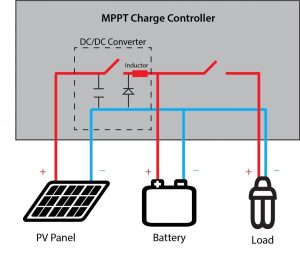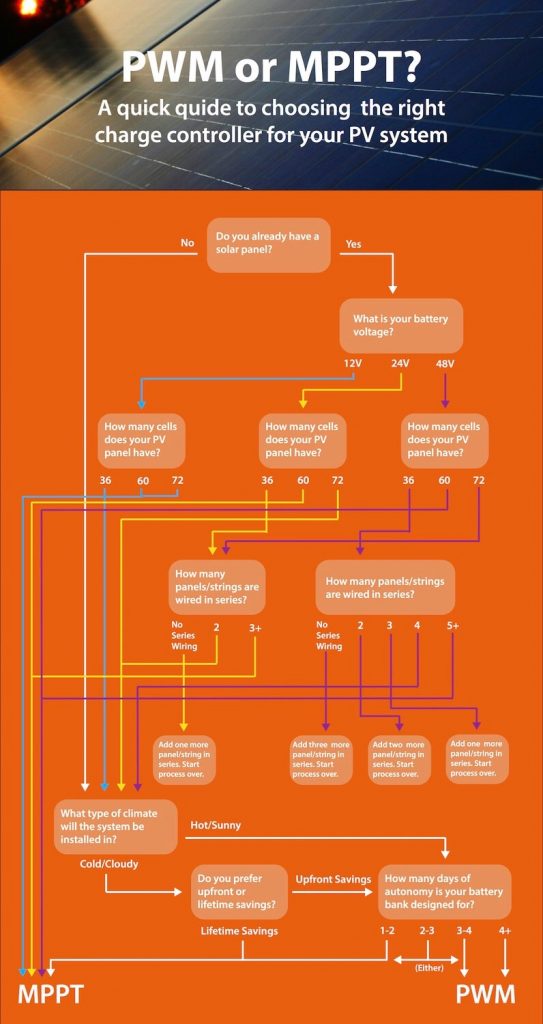Solar Inverter and Solar Charge Controller
Introduction
Tapping solar energy has become a common activity across the globe and the technology is reaching the several ends of the world, where it was unheard of a few years back. There are several components that are involved in tapping the energy from the sun. The solar inverter is one the most important components of a Solar photo Voltaic (PV) system. The role of the solar inverter is so significant that it is also referred as the brain of the solar photo voltaic system. Along with the solar inverter, the solar charge controller plays a significant role in making the system work efficiently.
Solar Inverter
Solar inverters convert the DC power produced by the solar PV modules to AC power. These solar inverters have inbuilt charge controllers in them. They are broadly classified as On Grid Inverters and Off Grid inverters.
On Grid Inverters
On Grid inverters are connected with the Grid. They convert the DC power from the solar PV module and fed it to the load. If the load requires more than that was produced by the solar PV modules, the On Grid inverter ensures that the additional power that is required is met from the Grid. If the power produced from the solar PV Panels is excess from what is actually required, then the excess power is exported to the grid. These On grid inverters do not have any option to connect to any batteries, So they cannot be used when there is a need to store energy. These on grid inverters are further classified into String, Central and Micro inverters.
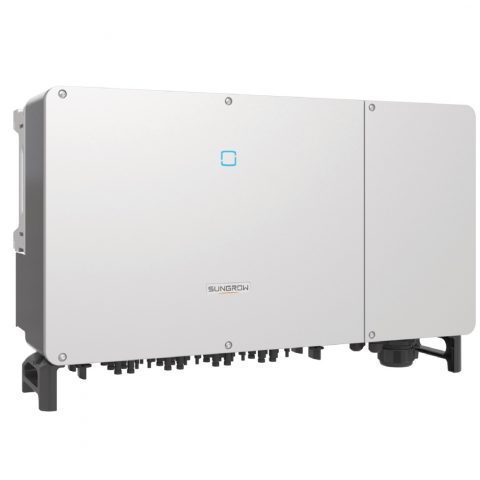

Central Inverters
Central inverters are usually used in large solar PV Power plants. The entire solar PV modules are connected to a single large inverter. They are very huge in size. Huge power cables are run from the module strings to the inverter as the input from all the solar PV modules to the central inverter will have a huge current.
String Inverters
String inverters are of smaller capacities that can be connected in parallel in a large solar PV farms. The solar PV modules are classified into several strings based on the locality in the size. If a particular string is under maintenance or fault, the rest of the system continues to work, unlike in a central inverter.
Micro Inverters
Micro inverters are small inverters that can be placed under a solar PV module and connected to it. The micro inverters can be connected in parallel sequentially. This ensures that micro inverters are capable of being used even in large solar PV farms. It is also very easy to maintain. However, cost wise, these are slightly expensive when compared to the other two types of inverters.
Islanding Effect
One of the important parameters in in on grid inverter is the islanding effect. The islanding effect ensures that the on grid inverter does not produce power when there is a grid failure. This ensures that there is no power flowing to the grid during outages or during any maintenance activities that is taking place.
Off Grid Inverters
Off Grid inverters are those that are not connected directly to the grid. They are however, connected to batteries, thereby having the option to store energy. In India, solar PCU (Power Conditioning Unit) or solar off grid inverters have an option to connect to the grid. However, the grid connection is not like that of the connection in On Grid inverters. Here the Grid connection is predominantly to charge the battery and to power the load when there is no adequate solar power form the solar PV modules. Unlike the on grid inverters, the off grid inverters do not share the power between the grid and the solar PV module. The power to load here, is either through the grid or from the battery. During the day time, when there is adequate solar power, the battery is first charged via solar PV modules. Once the battery is fully charged, the excess power from the solar PV module and the battery is used to power the load. This goes on till the battery a reached a predetermined voltage level. Once the battery reaches the predetermined voltage level, the solar PV module charges the battery and the load is powered via grid. Once the battery is fully charged via solar PV module, the load gets its power the battery and the solar PV module. This cycle goes on in the day time. In the daytime, when the battery reaches the minimum threshold level, if there is no Grid supply, the battery continues to give power until it is fully drained. In the night time, the grid supplies power to the connected load. When there is a power outage in the night, the battery supplies power to the load. If the power is restored in the night, the battery will be charged via grid. If the power is restored in the daytime, the battery will be charged via solar power.
Hybrid Inverter
Hybrid inverters are those which functions like that of an On gird inverter, with an extra option to connect to the battery to store energy. The stored energy in the battery is used to power certain minimal load during power outages.
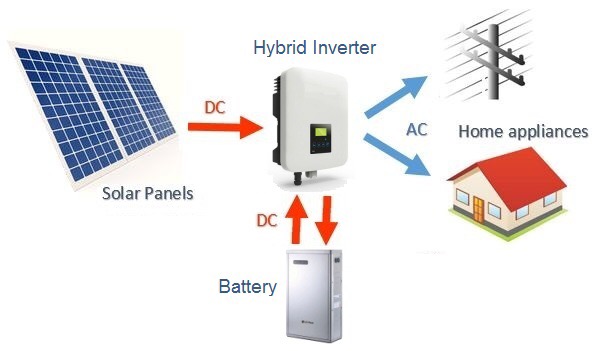
Solar Charge Controller
The solar charge controller regulates the incoming power from the Solar PV Module, thereby providing a regulated DC output. In case of a battery based system, the charge controller monitors the battery voltage and prevents the battery from over charging or excess draining. The excess energy from the solar PV module is also stored in the battery via solar charge controller. The DC loads are connected to solar charge controllers, from which they receive the solar power. It is also used in On Grid inverters where maximum power point tracking is used to get the maximum power from the solar PV module.

Types of Solar Charge Controller
There are two types of solar charge controller viz., PWM (Pulse Width Modulation) and MPPT (Maximum Power Point Tracking).
PWM (Pulse Width Modulation)
These type of charge controllers are widely used in the battery based systems. They control the power to the load. They have simultaneous on time and off time. During the charge time, they are in continuous On time and make sure that the battery is charged quickly. Once the battery is fully charged, it alternates between On time and Off time. This action helps in maintaining the battery voltage at the constant level and prevents the battery from either over discharging or over charging. The cost of PWM charge controllers are relatively cheaper.
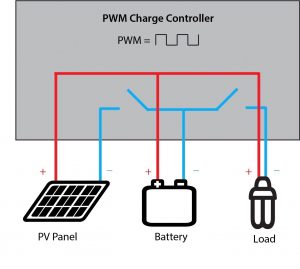
MPPT (Maximum Power Point Tracking)
MPPT charge controllers are widely used in On Grid inverter, even though it is also used in battery based systems. There is a minimum voltage from the solar PV modules that can be utilised to power the load. The voltage beyond the minimum threshold level is converted to current at a lower voltage via DC – DC converter. This ensures that the battery is charged quickly in a battery based system. In on grid system, where there is no battery, this ensures that the maximum power is being produced. The MPPT charge controllers are little more expensive when compared to PWM charge controllers.
